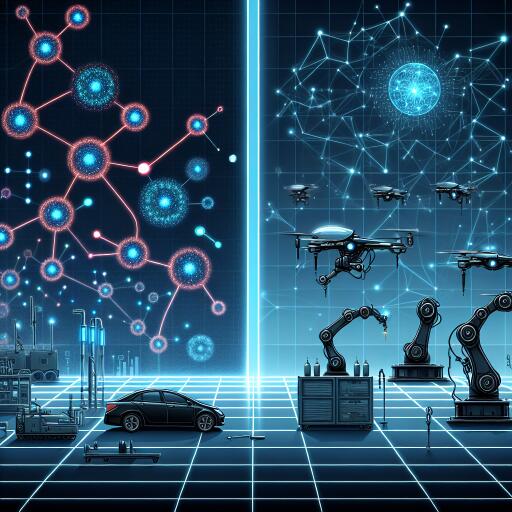AI At The Edge: Transforming The Future Today
The fusion of the Internet of Things (IoT) with edge computing has ushered in an era where the vast data produced by IoT devices, expected to reach 73.1 zettabytes by 2025, remains closer to its point of creation. This transformation is critical for applications where real-time processing is key. The evolution doesn’t stop there; the advent of AI technologies at the edge is now setting new benchmarks for efficiency, privacy, and security across various sectors.
In industries like manufacturing and healthcare, where precision and swift decision-making are paramount, AI at the edge is becoming a game-changer. The manufacturing sector, with its 15 billion connected devices, can’t afford the delays inherent in cloud processing. Similarly, in healthcare, the immediacy in analyzing patient data can dramatically influence diagnosis and treatment outcomes, especially with the rise of decentralized healthcare and wearable tech. AI at the edge eradicates the latency of cloud computing, enabling quicker, more informed decision making.
Market projections show a promising future, with edge computing technologies expected to grow from $46.3 billion in 2022 to $124.7 billion by 2027. This surge is attributed to the tangible benefits AI at the edge promises across industries, unlocking new potentials and achieving unprecedented performance levels.
Recent shifts in AI model development have placed emphasis on smaller, more efficient models. Thanks to techniques like quantization, sparsity, and pruning, these models retain the performance of their larger counterparts while being more cost-effective and easier to manage. These advancements make them ideal for edge deployment, where resources are limited and specific task performance is critical.
From monitoring the health of machinery in manufacturing to continuous patient monitoring in healthcare, these optimized AI models are tuned to the granular needs of different applications. Such precision ensures not only the longevity and efficiency of equipment but also the health and safety of individuals.
Pruning and quantization are key in making these AI models edge-friendly, focusing on reducing memory footprint and enhancing energy efficiency without sacrificing performance. Combined with techniques like low-rank adaptation (LORA), these methods allow for the fine-tuning of models in a way that balances performance with computational feasibility.
Dell Technologies leads the way in optimizing hardware and software to support AI at the edge, providing solutions that enable powerful AI operations whether on CPU or GPU. Their NativeEdge platform simplifies the deployment and management of edge infrastructure and applications, ensuring secure and scalable operations across locations.
The synergy between optimized models and capable hardware is fundamental to the success of AI at the edge. As we embark on this journey, real-world applications of AI at the edge showcase its potential to revolutionize industries by providing critical, real-time insights. This transition towards immediate, adaptable business operations is not just imminent; it’s happening now. Organizations that leverage AI at the edge stand to gain a significant competitive edge.
For those interested in exploring the intersection of AI and edge computing further, Dell Technologies Resource Library offers a wealth of information.
As we delve deeper into the age of smart technologies, AI at the edge presents a compelling narrative of innovation and ingenuity, marking a significant leap from theoretical frameworks to practical, impactful applications.
Contributed by Ananta Nair, an artificial intelligence engineer at Dell Technologies.










